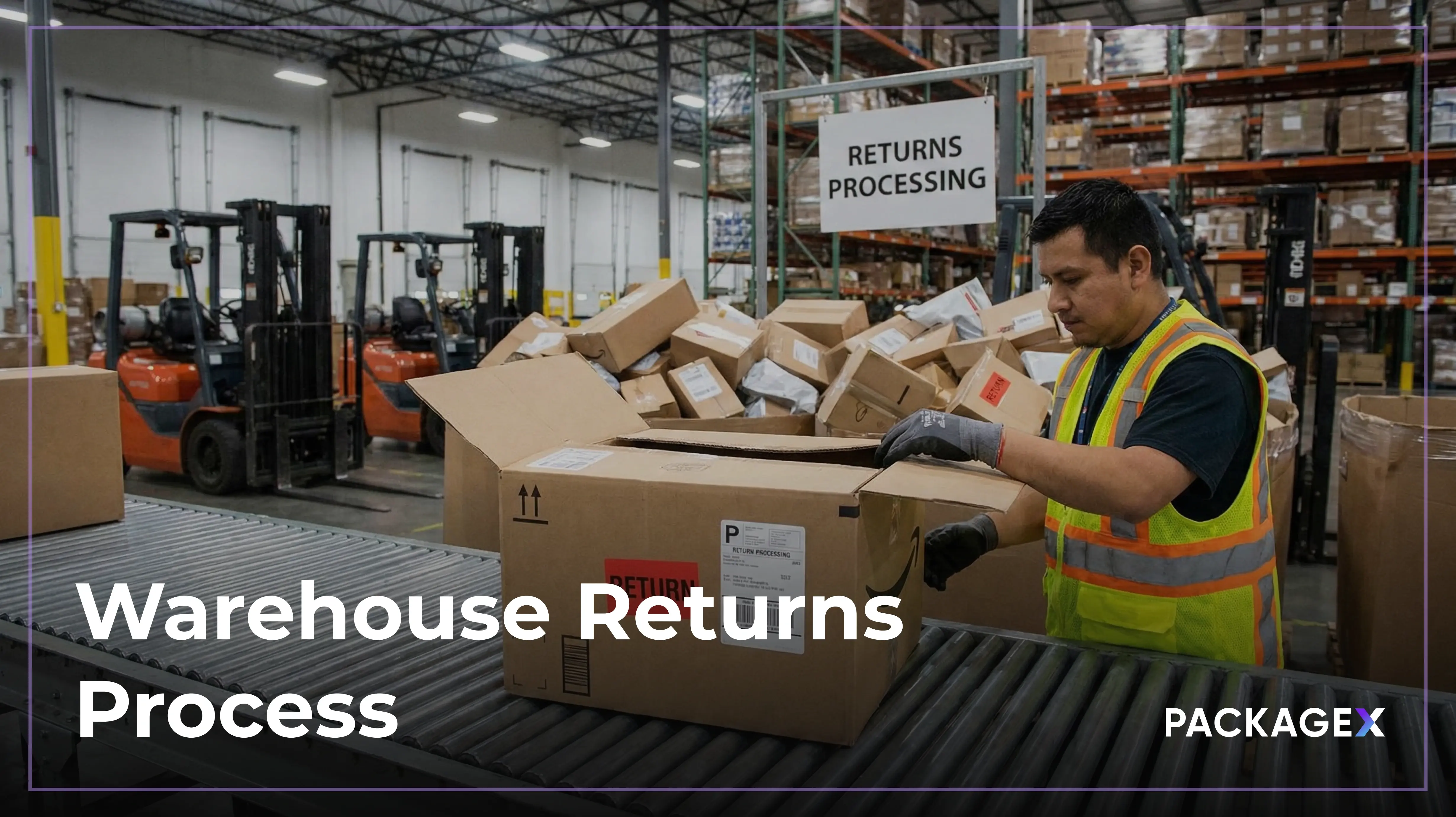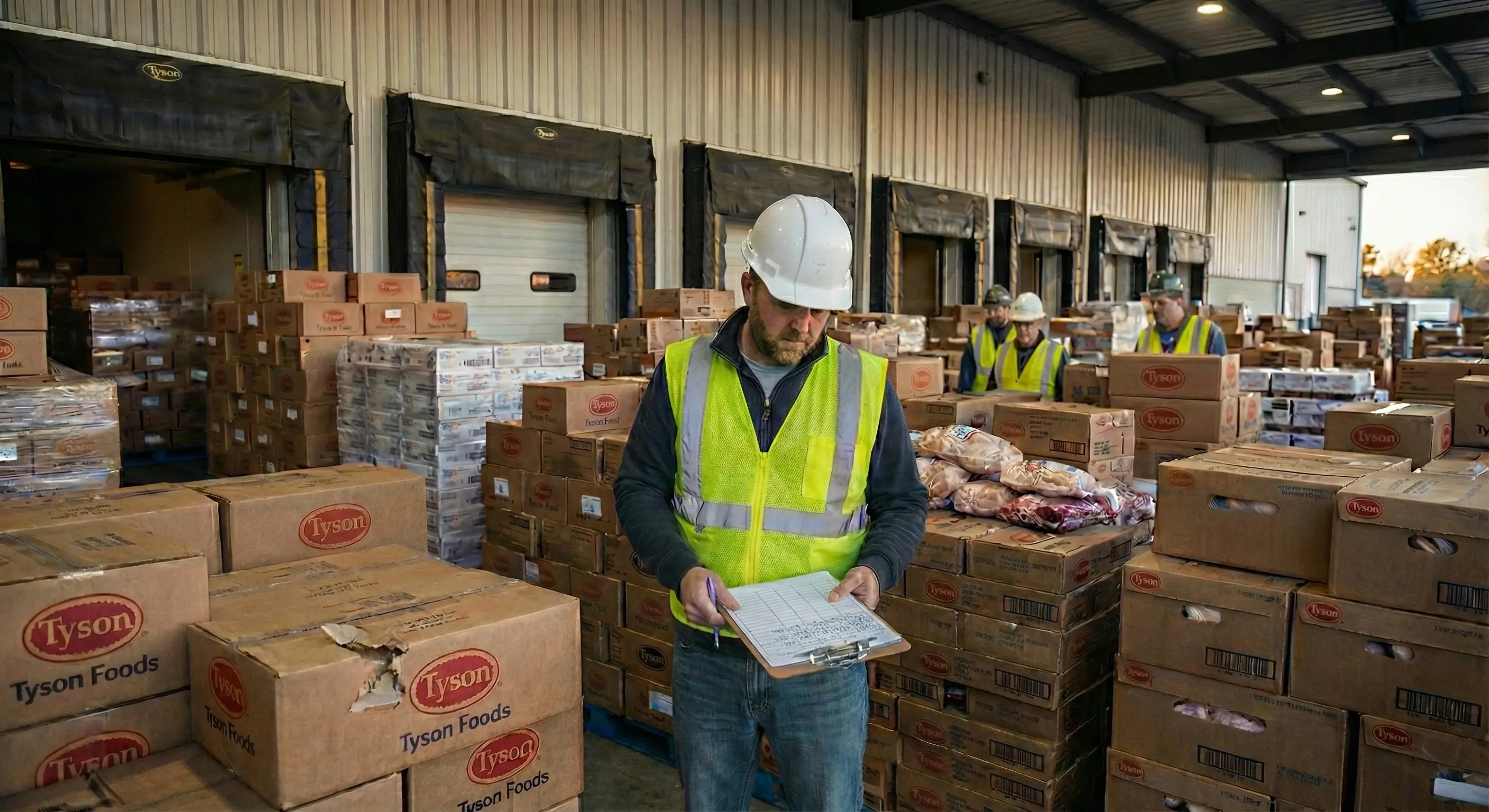The shipping warehouse has become an integral part of modern logistics. It works as a command center, built for speed, precision, and adaptability. As consumer demand increases and delivery windows shrink, businesses are rethinking how goods move from the shelf to the doorstep.
The global warehousing and storage industry is expected to grow at a compound annual growth rate (CAGR) of 5.7%, reaching an estimated value of USD 1,012.43 billion by 2030. These stats highlight the power of smart automation, tighter supply chains, and the rising need for real-time control in warehouse shipping operations.
From AI-driven inventory management tools to robotic sorters, today’s shipping warehouses are lean, fast, and future-proof. Whether handling e-commerce returns or high-volume fulfillment, a modern shipping warehouse has become essential.
What Is a Shipping Warehouse?
A shipping warehouse is a dynamic hub where goods are received, sorted, packed, and shipped to their final destinations. Acting as a vital bridge between production and delivery, these warehouses streamline the warehouse shipping process to ensure orders reach customers quickly and accurately.
Unlike traditional storage facilities, a modern shipping warehouse is designed for rapid fulfillment. It supports high-volume order processing, real-time inventory tracking, and optimized routing to keep pace with fast-moving supply chains.
Shipping warehouse vs fulfillment center
Though both are used in order fulfillment, there is a clear distinction between shipping warehouses and fulfillment centers. While both serve as storage facilities, each has different logistical purposes. The critical differences between shipping warehouses and fulfillment centers are as follows:
- Shipping warehouses are meant for medium- to long-term storage, while fulfillment centers are designed for short-term storage.
- Shipping warehouses are designed to store inventory, and fulfillment centers are created to process customer orders quickly.
- Shipping warehouses typically schedule pick-ups at regular intervals, but fulfillment centers may have multiple order pick-ups on the same day.
With the distinction between these two storage facilities clarified, the next topic is the various types of shipping warehouses that businesses can utilize as storage solutions.
Key Functions of a Shipping Warehouse
A modern shipping warehouse functions as a fast-moving hub that connects suppliers, businesses, and customers through a chain of tightly coordinated tasks.
Here’s a breakdown of its core functions:
1. Receiving and Storage
Every warehouse begins with receiving, where incoming shipments are checked for accuracy and damage. Once verified, goods are stored efficiently to allow quick retrieval and reduce handling time.
2. Inventory Management
Smart warehouse shipping software keeps track of inventory in real time, reducing errors and helping avoid overstocking or stockouts. This level of visibility is crucial for an agile supply chain management.
3. Order Fulfillment
When orders come in, the warehouse picks, packs, and preps them for dispatch. In fast-paced environments, automation ensures accuracy and speed in every step.
4. Shipping and Distribution
The core of warehouse shipping is timely delivery. Shipping warehouses coordinate with carriers, optimize routes, and handle documentation to ensure goods reach their destination quickly and cost-effectively.
5. Additional Services
Many shipping warehouses also offer extras like labeling, kitting, or light assembly, helping brands customize the final mile and enhance customer experience.
How the Shipping Process Works Step-by-Step?
Here’s how the warehouse shipping and receiving process unfolds step by step, often managed with advanced warehouse shipping software:
1. Order Placement & Processing
It all begins when a customer places an order, online, in-store, or through a B2B portal.
- Order Verification: Payment is confirmed and inventory is checked in real time.
- Inventory Updates: The warehouse for shipping syncs its inventory data to ensure accurate stock levels.
- Order Prep: Items are queued for pick and pack fulfillment using warehouse and shipping services.
2. Packaging & Labeling
- Packing Materials: Durable boxes, wrapping, and inserts are selected to ensure damage-free delivery.
- Labeling: The system prints shipping labels with tracking info, recipient details, and carrier barcodes, all automated through warehouse shipping software.
3. Customs Clearance (for International Orders)
- Export Compliance: Required documents, such as invoices and shipping manifests, are submitted as part of the broader invoice management and shipping compliance process.
- Import Clearance: Customs at the destination reviews and approves the shipment before release.
4. Transportation & Tracking
- Carrier Booking: A suitable shipping partner (FedEx, UPS, freight) is selected.
- Transit Begins: Packages leave the fulfillment warehouse shipping dock and hit the road, sky, or sea.
- Live Tracking: Customers and sellers track progress via digital dashboards or API feeds.
5. Final Delivery
- Arrival & Inspection: The shipment reaches the local hub and is inspected.
- Last Mile Delivery: Couriers make the last mile delivery to the customer’s door, the most critical and time-sensitive part of the process.
When streamlined with the right tools and systems, warehouse and shipping services turn logistics into a competitive advantage.
Types of Shipping Warehouses
There are various types of warehouses, and each one functions in a distinct way that makes it a good fit for certain kinds of products and businesses.
There are six main types of warehouses businesses can use to store goods:
1. Public Warehouse
One of the most cost-effective warehouse and shipping services is a public warehouse. This is a government-owned facility where individuals and private companies can rent storage space for their items.
The biggest benefit of using public warehouses is that they offer some of the most affordable rates.
2. Private Warehouse
Many companies and private organizations build and manage their own facilities. These are privately owned and usually used to store the proprietor’s goods.
Most private warehouses are equipped with warehouse shipping software and automation tools. They can provide full-service logistics, making them ideal for businesses with consistent volume and the need for an integrated warehouse for shipping control.
3. Cooperative Warehouse
When ownership of a warehouse is divided among a group rather than one company, it is called a cooperative warehouse. Members of the group can use the warehouse space at a discounted rate.
For example, a local farmers' collective may share a warehouse to store seasonal crops before distribution. This setup supports shared warehouse and shipping services at lower cost.
4. Bonded/Duty-Free Warehouse
A bonded or duty-free shipping warehouse is ideal for businesses that deal in imported goods. These facilities are approved by customs to store foreign goods without paying duties or taxes upfront.
Companies often use these warehouses to hold inventory until the exact moment of dispatch, streamlining international warehouse shipping and compliance.
5. Consolidation Warehouse
Some businesses don’t move enough volume to justify an entire warehouse. These organizations use consolidation warehouses to store goods until shipment.
By combining multiple shipments, businesses save money on transport. This is a common practice in fulfillment warehousing, especially for smaller retailers or B2B suppliers.
Key Technologies Used in a Shipping Warehouse
Running a modern shipping warehouse demands smart systems that move fast, think faster, and work around the clock. Here are the key technologies powering today’s warehouse shipping and receiving operations:
- Conveyor and Sortation Systems
These systems move products quickly through the warehouse. Items are sorted based on destination, size, or order type. This helps reduce delays and cuts down on manual errors across fulfillment warehouse shipping tasks. - Automated Storage and Retrieval (AS/RS)
AS/RS systems use machines to store and retrieve items. They save space, speed up picking, and help scale warehouse for shipping needs without adding labor. - AGVs and AMRs
Automated Guided Vehicles (AGVs) follow set paths. Autonomous Mobile Robots (AMRs) move freely and adapt on the fly. Both handle internal transport and boost efficiency in warehouse and shipping services. - Warehouse Management Systems (WMS)
Modern warehouse management software keeps everything in check. WMS platforms track inventory, manage orders, and guide operations with real-time data. - Assisted Picking Tools
Pick-to-light and voice-picking tech help workers move faster with fewer mistakes. These tools are essential for fast-moving warehouse shipping operations. - Robotic Packing Systems
Packing robots seal boxes, apply labels, and prep shipments. They help shipping warehouses process more orders in less time. - RFID Technology
RFID tags let teams track items without manual scans. That means better visibility and fewer lost items across the entire warehouse shipping and receiving workflow. - IoT Devices
Sensors track temperature, humidity, and equipment use. This data helps avoid downtime and improve output in any busy shipping warehouse. - AI and Machine Learning
Smart algorithms predict demand, optimize space, and even plan AGV routes. These tools turn a basic warehouse for shipping into a well-oiled machine.
Benefits of a Shipping Warehouse
Following are the proven advantages of a shipping warehouse:
- Lower Costs
A well-run warehouse for shipping helps cut overhead. Bulk storage and automation reduce labor and handling expenses. With warehouse shipping software, you can avoid costly errors and delays. - Faster Shipping and Delivery
Speed matters. A fulfillment warehouse shipping setup gets products out the door faster. It shortens delivery times and meets rising customer demands. - Better Inventory Management
Warehouse shipping software gives you real-time tracking. You know what’s in stock and what’s not. It keeps your supply chain tight and responsive. - Happier Customers
A smooth warehouse shipping and receiving process means fewer mistakes. Orders go out right and on time. That keeps your customers coming back. - Scalability
Modern warehouse and shipping services can scale fast. Whether you’re shipping ten orders or ten thousand, smart systems adapt.
Why Smart Warehouses are the Future of Shipping Operations?
Smart warehouses are going to redefine the industry in the coming years. The rate of technology adoption in warehouses is steadily increasing, and by 2027, the warehouse automation market is projected to reach a global value of $41 billion.
Transforming traditional shipping warehouses into smarter versions via automation and robotics allows these warehouses to function as more than mere storage facilities. Smart warehouses create a data-driven logistics environment where key metrics can be tracked to gain valuable insights that add business value.
When implemented correctly, smart warehouses boost efficiency, reduce costs, and afford greater visibility over an organization’s inventory.
Why Choose PackageX for Smarter Warehouse Shipping?
PackageX helps teams manage warehouse and shipping services with speed, control, and simplicity. From first scan to final delivery, it turns a traditional shipping warehouse into a smart, connected system. With AI-driven tools, warehouse shipping software, and ready-to-use logistics APIs, PackageX gives teams full visibility without added complexity.
Here’s how PackageX supports your operations:
- Simplify warehouse shipping and receiving tasks with AI scanning.
- Tracks inventory and orders in real time using warehouse shipping software.
- Connects easily to other systems with out-of-the-box API integration.
- Powers fulfillment warehouse shipping with accurate, fast updates.
PackageX is built for teams that need speed, accuracy, and control. Whether you run a single location or manage multiple shipping warehouses, it delivers the tools you need to grow and adapt.
FAQs
What do shipping warehouses do?
Shipping warehouses receive, store, pack, and ship goods to customers or retailers. They streamline the warehouse shipping process using automation and real-time inventory management tools. These facilities play a key role in modern logistics operations.
What does it mean when your package is at a warehouse?
It means your item is in the shipping warehouse, where it's being sorted, packed, or prepared for delivery. This is a key stage in the warehouse shipping and receiving process. Your order will be dispatched once it's ready for transport.
What is a warehouse shipment?
A warehouse shipment refers to goods being dispatched from a shipping warehouse to their final destination. This process involves order fulfillment, packaging, and coordinating with the carrier. Efficient logistics and inventory management enable timely delivery.




